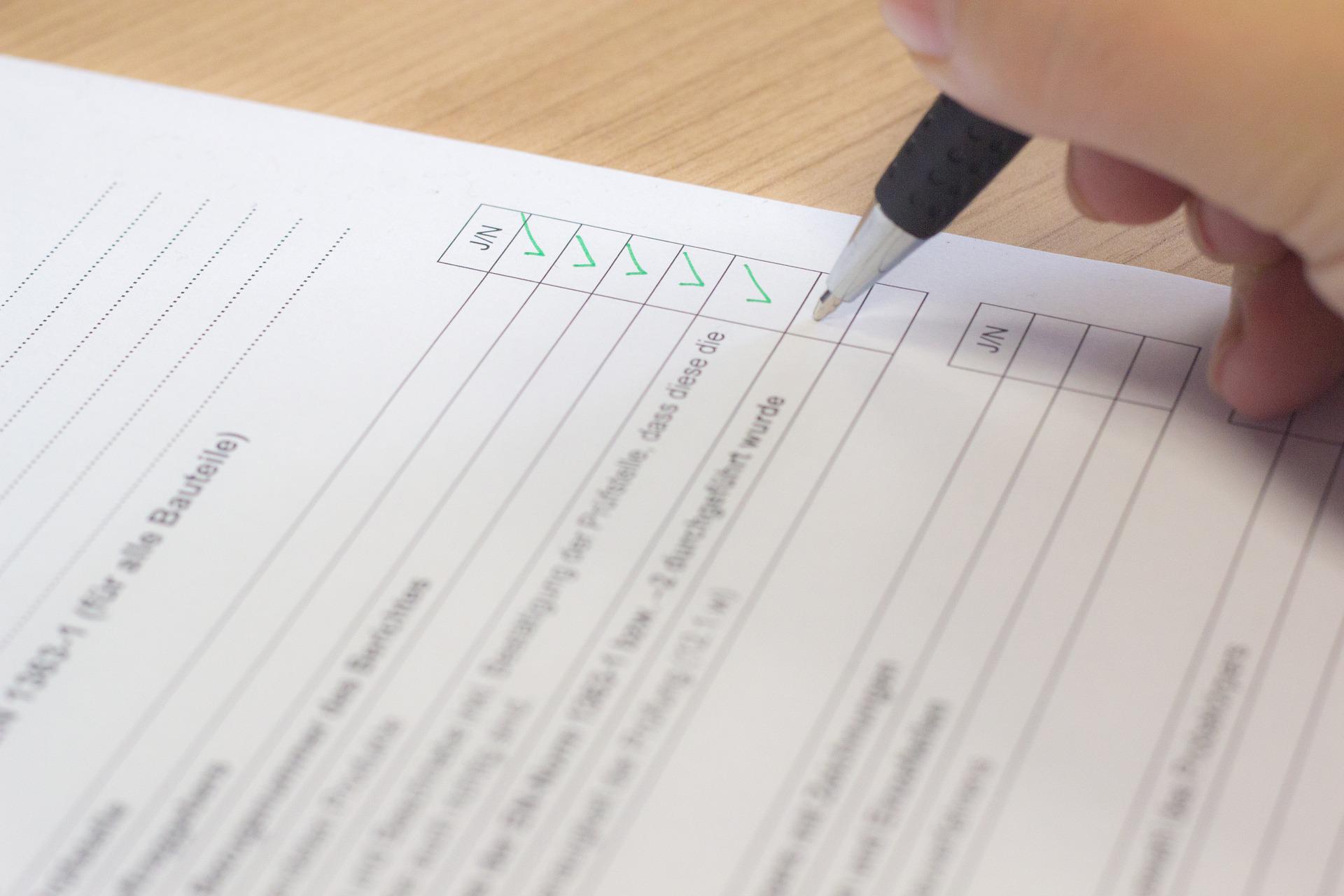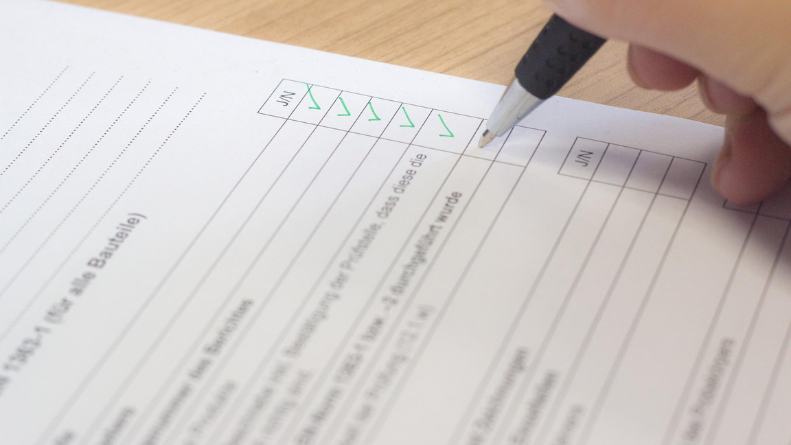Why is a Tenancy Inventory Important?
Tenancy inventory reports are essential if you have rented out a property. They are critical if tenants want to get their security deposit returned after they’ve vacated the property. Learn more about tenancy inventory reports and your obligations as a landlord.
A quick guide to tenancy deposits:
- Inventory reports can accurately describe rental properties and can be used to figure out damage claims at the end of the lease.
- Inventory checks at the end of a tenancy are very important for resolving any problems with the security deposit.
- The inventory is largely relied upon in formal adjudication to determine if renters have caused the property’s value to decrease.
- A professional inventory business or trustworthy letting agency should always be used for preparing inventory reports. This is likely to lead to the best possible outcome.
- To avoid confusion, inventories should be as detailed as possible and include photos or videos as proof whenever possible.
- After the inventory is done, tenants should get a copy of it as soon as possible and check that it is correct.
- As a renter, it is your responsibility to notify of any discrepancies or disagreements that may have occurred in the inventory.
- Even if your landlord provides you with a different inventory, you are free to create your own based upon your own observations. Again, video or photo evidence is advised.
- Not legally obligatory but highly encouraged, tenant inventory inspections are widely adopted by landlords and tenants.
- In certain instances, tenants may be excluded from damage claims when there is no move-in inventory. If the renter breaks something on the property, the landlord must prove that he is entitled to keep the security deposit.
The basics of a tenancy inventory
“Documentation of the property, its contents, and their condition are recorded in an inventory report, which is supplemented by digital material like photos and videos. An inventory report is done before and after the renter moves in and out with their belongings. Both reports should be based on the same criteria. In order for landlords and tenants to be able to compare future references, these reports form an essential part of the tenancy for both parties,” noted Jamie Johnson, CEO of FJP Investment.
The inventory reports are critical documentation you’ll need to keep track of when renting a home. Only a tenancy agreement and rent receipts can be considered more important for landlords.
Moving in/moving out inventory might also be referred to as a “schedule of condition” or “tenancy inventory.” They all mean the same thing, but some of them only apply to a certain version of the inventory report.
Both the landlord and the renter benefit from the inventory reports. They both have an interest in documenting the contents and condition of the property for their own records and future reference. It’ll be easy to see how the property has altered under a landlord’s renting history if the two reports are done correctly.
If a disagreement between a tenant and landlord about damage, cleanliness, or any other issue arises, it will hinge on the inventory as evidence for a claim. The only thing the adjudicator will use to decide about your claim is the inventory.
At the beginning of your tenancy, it is important to know the state of the property and what is expected of a tenant in terms of upkeep. When renters move out of a home, inventories can assist in protecting them against unjustified deductions from their security deposit.
Who should carry out the tenancy inventory report?
The landlord is usually in charge of inventory because it is their property that needs to be accounted for. The landlord has several options when it comes to who carries out the task of recording the inventory. He or she can decide to do it themselves, or they can hire a letting agent or professional inventory company to do it for them. They could even opt to allow the tenant to do it if they wish. In a legal dispute, the validity of this agreement may be called into question if it is not signed in the presence of both the landlord and tenant.
It is necessary for inventories to be structured in a way that is both understandable and straightforward; there should be no ambiguity. In order to be accepted as evidence, the statements must be agreed upon by the renter that they constitute an accurate reflection of the property’s current condition.

The move-in inventory should be completed before the tenant moves into the property. Prior to the tenant moving in, this should be done to ensure that the property is in its best shape.
After the tenant has removed their belongings and returned the keys to the landlord, the second inventory (move out) should be completed, which is called “final inspection.” Before the final inspection, make sure the tenant has been given plenty of notice so that they can carry out any repairs or cleaning required.
Both of the inventories should be attended by the tenant, and they should ideally participate so it reflects the agreement of both parties. Having to pay for damage you did not cause might be a frustrating experience if an error is made in the check-in report. That’s why it’s important for tenants to be cautious and to search for any potentially problematic issues with their landlord and make a note of them. Tenants should check everything and not sign anything until all of the problems and flaws are written down and even photographed.
Professional inventory services
While renters and landlords might do a decent job of evaluating a property, they aren’t real estate experts. They are prone to making mistakes and skewing the results to their benefit because they aren’t given any instruction on how to conduct a property inspection.
Reports can be manipulated by both parties, as they both have a vested interest in the outcome. For example, a tenant’s returned deposit could be reduced if landlords conceal damage during the move-in report, making it their responsibility and hence deductible from the deposit. The move-out report, on the other hand, can be a great opportunity for renters to hide as many faults as possible so that they may get their full deposit back.
Both reports should be drafted and amended by both sides in order to avoid situations like the one described above. Having said this, the difficulty of making changes to an inventory that has already been created means that mistakes are more likely to be made in the real world, where it is sometimes too late to repair them.
The gap between the two is often filled by letting agents. It’s ideal to let your agent handle the inventory if you can trust them to do a decent job. Agents who belong to one of the major industry groups, such as ARLA, NALS, or UKALA, are usually reliable sources.
Estate agents, like landlords, are bound to the property financially, and this can influence their behaviour also.
If possible, you should engage a professional inventory business for peace of mind. Indeed, it makes sense to commit your deposit to an unbiased deposit protection scheme, just as you would leave the condition of the property to an impartial third party.
You may be sure that the report will be accurate because inventory clerks have nothing to gain by distorting it. In fact, their reputation is staked on impartial and accurate reports. Because they have received specialised training and are paid to conduct property inspections on a daily basis, it is reasonable to assume that they will do their duties more efficiently than anybody else, including the letting agency.
If a tenant can work out a deal with their landlord, it’s always a good idea to use a professional inventory service. It’s reasonable to share the fee for the report or have one party pay for any of the two reports, since both parties are interested in having the most accurate inventory.
You don’t want to rely on just any inventory firm, just like you don’t want to rely on just any letting agency. Members of the Association of Independent Inventory Clerks are the best choice for this task.
Checking the inventory is right
In the event that you missed the first inspection, be careful to get a copy of the report and double-check its accuracy to the time you obtained the property.
Taking an inventory for granted could end up being a costly mistake. There is no guarantee that the information in the document is true or complete, even if it was prepared by a third-party professional. To protect the tenant , the inventory should represent all of the property’s issues.
The tenant should go through the house room by room, looking for issues and making sure that they are reflected within the inventory. Everything that is missing from the inventory or is wrongly listed should be written down and, if possible, photographed.
Seek to obtain a fresh copy of the inventory report by sending the list back to the person who gave it to you and requesting that these changes be made.
It’s imperative that this be done as soon as possible so that the revisions can take effect and become valid. It’s important to get the landlord’s written consent to your changes, and if feasible, get the most recent copy of it signed by them also.
A thorough inventory will include the following:
- The landlord’s, tenant’s, and any letting agent’s full names and addresses are required.
- The date and name of the person who took the inventory.
- A comprehensive list of all of the property’s interior and exterior, furnishings, and fixtures and fittings.
- It’s important to note the state of these recorded items (e.g., “slight scratches to the surface” or “new condition”).
- Key lists/meter readings/serial numbers.
- Incorporating photos or video. If these do not form a part of the report itself, then make sure they are signed and refer to a specific part of the inventory.
- Receipts related to the inventory. For instance, you could include receipts for cleaning or decorating the property before the tenant moved in.
- The landlord and the tenant/s must both sign and date the inventory agreement.
- Initial all of the pages in a document.
Things to look out for when conducting an inventory:
This is by no means an exhaustive list, but it should give you a rough idea of where to look for when conducting an inventory check. By simply redoing the first report and noting any changes in the condition, the second report becomes much simpler.
- The structural integrity of the walls, ceiling, and floor.
- Note all surface or superficial damage, such as any stains, scuff marks, dings, dents, nail holes, and mould.
- Damage to the windows and frames, such as peeling sealant, chipped paint, glass cracks, frames with signs of rot, and mould in and on them, are all signs of previous neglect.
- Note any rips or tears in the upholstery, marks on the wood, broken legs or other missing parts, and fire safety standards for the furniture.
- Squeaky hinges, warped cabinets, and drooping doors are all symptoms of cabinet and wardrobe wear and tear.
- Note the condition of carpets and curtains. This includes things like stains, cigarette burns, tears, rips, worn fibres, browning of carpets and curtains, etc.
- Equipment, electrical grid, plugs, and fuses Are they in safe, working order?
- The condition of gas appliances.
- Slow or clogged drains, inadequate sanitation facilities, limescale, and discolouration in the water are all issues that need to be recorded.
- Is the heating system and the supply of hot water in working order?
- Sinks, tubs, and tiles that have developed cracks.
- Grout or sealants that are mouldy or eroding.
- Are there any noisy hinges, dangling doors, or locks that don’t close correctly on doors and windows?
- Cracks, missing render, and inadequate insulation in exterior walls.
- Roof damage includes missing tiles, deformity, and rotted joists and supports.
- Blocked, rusted, or otherwise damaged gutters.
Preparing the inventory report
It’s useful to use a spreadsheet to keep track of all the items and their conditions (poor, good, brand new, etc.). Make a note of all the specifics in a separate document and use them as references in the spreadsheet.
Take high-quality shots of the relevant material. Take a snapshot of the harm in question that is as plain as possible and take shots from multiple angles.
As evidence of the date, include a newspaper in the photograph and use the timestamping feature on your camera. Although neither of them is conclusive evidence of when and where you took the images, having both of them makes them even more convincing.
To get a sense of the overall atmosphere and condition, snap a couple broad shots of each room. Pay attention to the finer points and more expensive components, such as the appliances, furnishings, and windows.
Depending on the circumstances, you have the option of making a video inventory. Keep it simple, but if you’ve got a GoPro on hand, why not use it when you go through the rooms?
The tenant can ask the landlord to sign off on the most important pictures. The inventory report should also include a mention of them and ensure that all of your inventory paperwork and photos are shared with the other party.
ARE YOU READY TO START INVESTING?
Subscribe to our mailing list now for exclusive deals, investment guides and the latest information from the property market.







